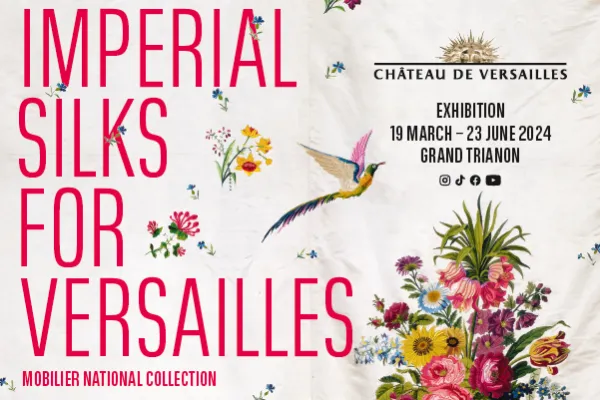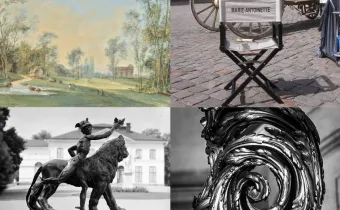An Exceptional Order
In February 1810, having expressed the wish to redesign Versailles, Napoleon granted a special fund of six million francs for this purpose. At the same time, the Lyon silk factories were experiencing great difficulties. The Emperor sought to support them through this crisis with a substantial order, dedicating two million francs to it. Between 1811 and 1813, no less than 80 km (50 miles) of fabrics would be delivered by the Lyon silk craftsmen to the Imperial Garde-Meuble (Furniture Repository) for Versailles. This exhibition, proposed by the Palace of Versailles and the Mobilier National (National Furniture collection), revisits the history of this significant order.
The Exhibition
The first part of the exhibition evokes the historical and economic context of this order. Original samples and archival documents illustrate the involvement of various actors, from the Lyon silk workers to the meticulous imperial administration, which developed unprecedented verification techniques for the occasion. Advances in the field of textiles are also discussed, with the presentation of a model of the Jacquard loom as well as investigation techniques in the fields of chemistry and dyeing.
A second part is devoted to the architectural arrangements considered for Versailles by Napoleon, forming the context of the order placed with the Lyon silk workers. Debates among architects and the evolution of taste between the Ancien Régime and the early 19th century are discussed, notably through watercolours by Jacques Gondoin.
The exhibition then proposes to discover the decorative projects for Versailles by various Lyon silk workers and the fate of the silks from Napoleon's great order, especially under the July Monarchy and the Second Empire.
The 80 km (50 miles) of fabrics delivered in 1813, and for the most part never used under the First Empire, testify to the unexpected originality of the colours and patterns chosen. The Lyon silk workers, revitalised by this considerable order, all vied to be the most audacious and therefore please the Emperor and his wife. The exhibition thus presents a unique collection of 120 silks.
Exceptionally, the tour of the Emperor's apartment in the Grand Trianon has been included in the exhibition tour. Original Lyon silk samples are compared to textile restitutions made in the 1960s during the restoration of the Grand Trianon.
Curatorship
Muriel Barbier, Chief Curator of Heritage, Director of Heritage and Collections at the Château de Fontainebleau
Noémie Wansart, Scientific Advisor, National Museum of the Palaces of Versailles and Trianon
Scenography
Véronique Dollfus





